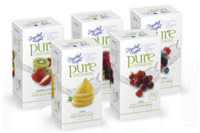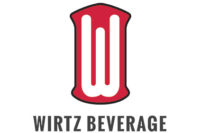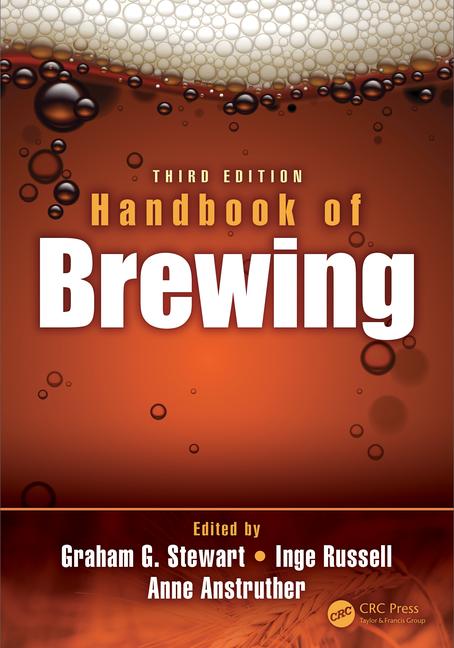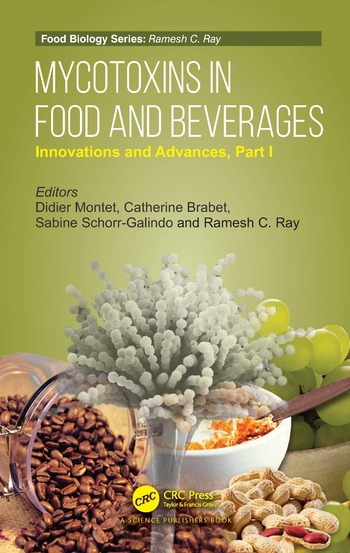Getting your fill of fiber
Fortification helps deliver ingredient’s benefits


Ingredion’s Patrick Luchsinger explains that beverage-makers are utilizing soluble fiber within juice applications. Sneaky Pete’s Oat Beverage line contains 2 grams of soluble fiber in each 12-ounce bottle. (Image courtesy of Sneaky Pete’s Beverage LLC)


Kellogg’s To Go ready-to-drink breakfast shakes contain 5 grams of fiber in each bottle. (Image courtesy of Kellogg Co.)




Whether it’s because of its weight management capabilities or its preventative links, fiber is putting its stamp on the American diet. According to the Academy of Nutrition and Dietetics, fiber can contribute to good health in many ways, including preventing heart disease, diabetes, digestive problems and weight gain. However, experts note that many consumers are not getting the recommended daily amount (RDA) of fiber, which is 25 grams for women and 38 grams for men, according to the Chicago-based organization. After age 50, the RDA decreases to 21 grams for women and 30 grams for men, it adds.
Patrick Luchsinger, marketing manager of nutrition for Ingredion Inc., Westchester, Ill., notes that internal research by the company found that high-fiber diets are more popular now than low-fat or low-calorie diets, with consumers increasing their fiber intake during the last couple of years; however, the average adult still consumes only 15 grams of fiber a day. He adds that research by Chicago-based market research firm Mintel states that many consumers still have negative perceptions about fiber taste.
“The negative fiber taste perception can deter them from eating a fiber-added product that has numerous health benefits,” Luchsinger says. “In essence, the consumer realizes they should have more fiber in their diet and are including fiber in their diet albeit still low because of the negative taste perceptions around fiber.”
In order to curb these perceptions, Luchsinger says that education is the key. “What the industry can do is address this issue head on and educate consumers, dispelling negative perceptions about fiber taste, such as its low impact on the taste of the end-product when utilizing the right fiber for the application,” he explains. “But this education will take time, with the introduction of new products with fiber that taste good and the effort it takes to educate the consumer on a national scale."
Erin Inventor, marketing research manager for Tate & Lyle, Decatur, Ill., notes that consumers placed fiber as sixth in a list of the Top 10 functional foods in an International Food Information study, and that Tate & Lyle’s research is uncovering more insight into consumers’ perceptions.
“In short, consumers want more fiber in their diets,” she says. “This study reveals [that] 47 percent of American consumers say they need to consume more fiber. More than two-thirds understand that fiber helps maintain a healthy digestive system and supports good health generally.”
Zach Gooding, product development scientist for Archer Daniels Midland Co. (ADM), Decatur, Ill., also says that consumers are becoming better educated about the need for fiber fortification in order to meet their RDAs.
“Adding fiber to beverage applications provides a way to capitalize on the need for consumers to supplement and increase their fiber intake,” he says.
Gina Steffensmeier, director of marketing and commodities business for Roquette America, Geneva, Ill., also sees opportunities for beverages to fulfill consumers’ fiber needs. “Many consumer diets are fiber-deficient, so consumers seek healthy, convenient ways to supplement their fiber intake,” she says. “Beverages provide a great opportunity to help consumers increase their fiber consumption, as they can be easily consumed on-the-go and they form a very large part of consumer consumption habits.”
Soluble solutions
In addition to taste, consumers also might have negative perceptions when it comes to the texture associated with fiber, experts note.
“Consumers tend to perceive fiber in beverages as having a negative impact on the sensory experience, often thinking of fiber in terms of stir-in supplements that tend to result in a high-viscosity beverage,” Steffensmeier says.
For example, insoluble fiber can have a gritty mouthfeel, says Carol Lowry, senior food and beverage scientist for Cargill, Minneapolis.
Because these particles don’t solubilize, insoluble fibers are best suited for thick beverages such as smoothies or shakes, Lowry says. However, soluble fibers like Cargill’s Oliggo-Fiber inulin will solubilize in liquid and can be used in a wide range of beverage applications, she explains.
“It really is an all-purpose fiber,” Lowry says. “It’s used in a lot of different applications, so there’s really not a challenge to working with that fiber in a beverage other than low-pH systems. If you were to put it in a juice or some type of beverage that is below 3.5 [pH], you can start to get acid hydrolysis of the glucose unit that makes the fiber and you’ll end up with a sugar instead of a fiber, but other than that, inulin soluble fiber doesn’t really have any challenges.”
Also highlighting the need for soluble fibers in the marketplace, Roquette offers its Nutriose line. “Solubility is important to providing an experience that appeals to the end-user, so it’s important to incorporate fiber in a way that doesn’t interfere with a beverage’s expected clarity, mouthfeel or flavor,” Steffensmeier says. “Because Nutriose has unique properties that enable the inclusion of soluble fiber in all types of beverages — even in large quantities — it provides a positive health benefit while promoting consumer acceptance.”
Its Nutriose FB06 and FM06, in particular, are ideal for fiber fortification in juices and low-sugar flavored waters, she adds.
Ingredion’s Luchsinger explains that beverage-makers are utilizing soluble fiber within juice applications as many juices leave out the fiber-containing pulp, rinds and skins from fruits and vegetables. Ingredion’s Nutraflora short-chain fructooligosaccharide is a soluble prebiotic fiber.
“It is completely soluble, well tolerated, readily dispersible, has no viscosifying effects in beverages, and does not affect the taste profile of the end product,” Luchsinger says. “It allows for claims on fiber content, digestive health, immune health and bone health.”
Tate & Lyle also offers soluble fibers that can readily dissolve in water; impart minimal, if any, change to a product; and do not impart any special processing steps, says Adrienne Pohrte, team leader of beverage applications.
“Tate & Lyle’s Promitor Soluble Corn Fiber and Sta-Lite polydextrose range enables fiber claims for a beverage without adversely affecting a product’s mouthfeel as they can be easily integrated into existing formulations,” she says. “They are highly soluble, dissolve clear in beverages, [and] have an excellent pH, temperature and chemical stability. Even in ‘near’ waters, our fibers will not be detectible to the consumer except for the increased fiber content on the nutrition panel because they do not negatively impact the flavor, texture or color.”
Sta-Lite is available in powder and liquid forms and provides 1 kilocalorie per gram, Pohrte says. It also has prebiotic properties, which could promote a healthy digestive system, she adds. Promitor is available in both liquid and powder forms but also in agglomerated forms designed for powdered soft drinks and at two fiber levels: 70 and 85 percent, Pohrte explains. Depending
on the product application, Promitor provides 1.9 or
1.2 kilocalories per gram, and emerging data suggests it can help improve calcium absorption, she adds.
Offering a full line of soluble fibers, ADM’s Fibersol brand includes Fibersol-2, Fibersol-2 AG, Fibersol-LQ and Fibersol-HS. Its Fibersol-2 is a digestion-resistant maltodextrin that contains 90 percent soluble dietary fiber, Gooding says. “It can be added invisibly to virtually any beverage application, up to and exceeding the levels to make a ‘good source of fiber’ or ‘excellent source of fiber’ claim, provided all other conditions are met for such a claim,” he adds.
Fibersol-2 AG was designed for applications that require rapid dispersion and dissolution, while Fibersol-LQ corn syrup is best suited for applications where the need for handling a liquid product, as well as its sweetness and humectancy from the higher dextrose content, are beneficial, Gooding says. Fibersol-HS contains 78 percent of dietary fiber from Fibersol-2 and features the sweetness from honey and purified steviol glycosides, he adds.
Bountiful benefits
With the ability to add fiber to products in a soluble form, beverage manufacturers have more opportunities in their product development.
“Beverage-makers are looking for an angle to make better-for-you beverages with reduced sugar and calories and with additional health benefits, as compared with sweetened beverages already on the market,” Gooding says. “Adding soluble fiber can help manufacturers achieve these goals. Not only will soluble fiber ingredients add fiber content, but when used in conjunction with high-intensity sweeteners to replace standard 4 [kilocalorie per gram] carbohydrate sweeteners, [they] can add back the mouthfeel lost by replacing nutritive sweeteners and help balance out off-notes and sweetness profiles of high-intensity sweeteners.”
Cargill’s Lowry notes that its Oliggo-Fiber, a chicory root extract, can have a symbiotic effect on the digestive system.
“Chicory root extract, when it goes through the digestive system and it breaks up and starts to lower that pH, also creates short-chain fatty acids, which is part of why the pH is getting reduced, and the short-chain fatty acids are food for the good bacteria in your intestines, so it acts as a prebiotic,” she explains. “Yogurt drinks would be probiotic beverages, so if you combine a prebiotic with a probiotic, you’re just boosting that much more benefit for digestive health.
“You’re feeding the probiotic bacteria that [are] being enhanced by the yogurt beverage, and it’s also feeding the bacteria that are already in your intestines, so it’s like a double whammy,” she continues.
Lowry adds that fiber fortification in beverages has a number of opportunities including appealing to the children’s health market. “With all the focus on kids’ nutrition right now, I think it’s a great opportunity to provide more fiber in kids’ diets, and to do that in a beverage would be great,” she says.
Looking for a reprint of this article?
From high-res PDFs to custom plaques, order your copy today!













